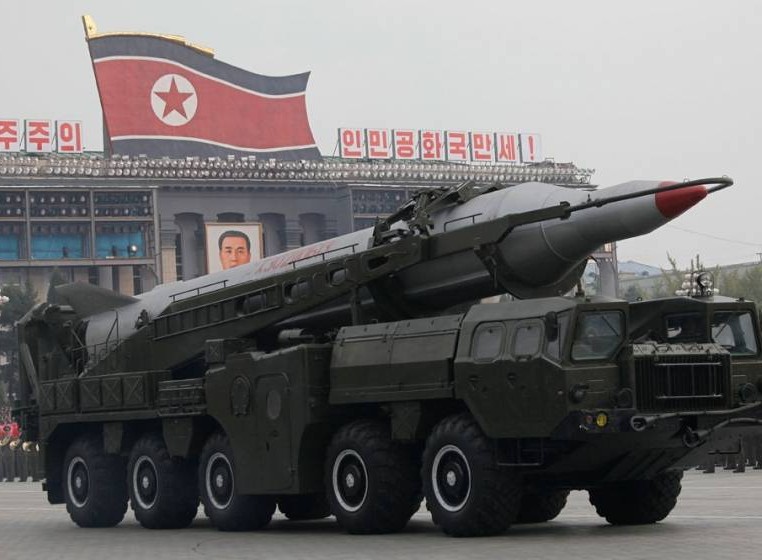- California Assembly OKs highest minimum wage in nation
- S. Korea unveils first graphic cigarette warnings
- US joins with South Korea, Japan in bid to deter North Korea
- LPGA golfer Chun In-gee finally back in action
- S. Korea won’t be top seed in final World Cup qualification round
- US men’s soccer misses 2nd straight Olympics
- US back on track in qualifying with 4-0 win over Guatemala
- High-intensity workout injuries spawn cottage industry
- CDC expands range of Zika mosquitoes into parts of Northeast
- Who knew? ‘The Walking Dead’ is helping families connect
N. Korea fires two ballistic missiles, one blows up in flight

S. Koreans are speculating that it was this Nodong missiles that was fired into the sea early Friday in Korea. (Yonhap file)
SEOUL (Yonhap) — North Korea launched two missiles on Friday in the latest show of force against the ongoing joint military exercises between South Korea and the United States, but one appears to have blown up mid-flight, military sources said.
The Joint Chiefs of Staff (JCS) said one ballistic missile was fired around 5:55 a.m. from Sukchon located in the western part of the country.
The missile, believed to be a mid-range Rodong model, flew about 800 kilometers across North Korea before falling into waters off the country’s east coast.
“The missile dropped into waters within the Japanese Air Defense Identification Zone,” the JCS said.
Military sources said the North did not declare a no-sail zone for the launch – it is required under international conventions to give prior warnings to ships passing through the area.
About 22 minutes after the first launch, the South Korean military’s radar detected what appeared to be a second missile fired from the same area. But the radar lost track of it at an altitude of 17 km, the JCS said.
According to military sources, the second missile may have exploded in the air briefly after takeoff, without reaching its target area.
“An analysis so far indicates it was a missile, but more examination is needed to verify the data,” the JCS said.
Military officials here said the first ballistic missile appears to have been launched from a transporter erector launcher, a mobile missile vehicle.
It is North Korea’s first firing of the mid-range Rodong missile in about two years.
With a maximum range of 1,300 km, the Rodong puts all of South Korea and part of Japan within striking distance.
The ballistic missile could carry high explosives or chemical ammunition in its warhead.
South Korea and the United States are set to wrap up one of two massive joint military exercises, which the countries kicked off on March 7.
In protest against the annual drills, which the North condemns as a rehearsal for invasion, the communist nation shot off two short-range missiles into the East Sea on March 10.
A defense official said the recent series of missile launches may also be in line with North Korean leader Kim Jong-un’s calls for more nuclear and missile tests.
Over the past week, Kim was reported to have ordered his officials to carry out more nuclear and diversified missile tests to advance his country’s nuclear attack capability.
“The latest launch is a direct violation of United Nations Security Council resolutions and a severe threat to the peace and stability of the Korean Peninsula and the region,” the official said.
Having tested the short-ranged Scud and mid-range Rodong, the North may venture into difference kinds of missile launches down the road, including another nuclear test, he said, adding that the military is keeping close tabs on the situation.
Seoul’s Foreign Ministry, meanwhile, said that it will promptly take all “necessary steps” with the U.N. Security Council and the international community to deal with the North’s latest provocation.
“We will make efforts to apply across-the-board pressure on the North so it will clearly realize that it cannot survive without abandoning its nuclear and missile programs,” the ministry said in a statement.
“Under a robust readiness posture, we will sternly deal with any North Korean provocations that threaten the lives of our citizens and the security of South Korea.”















